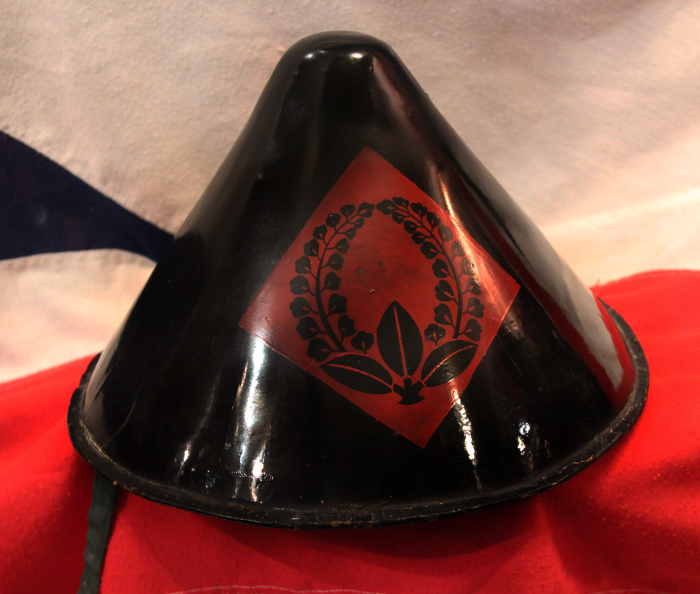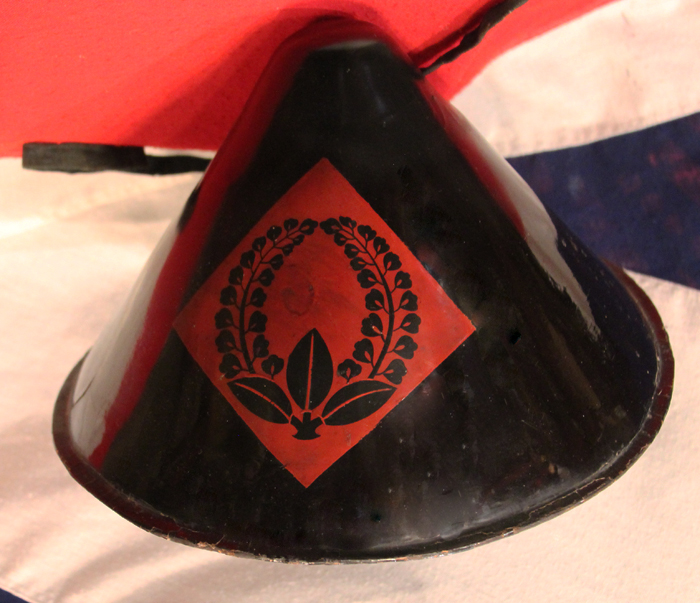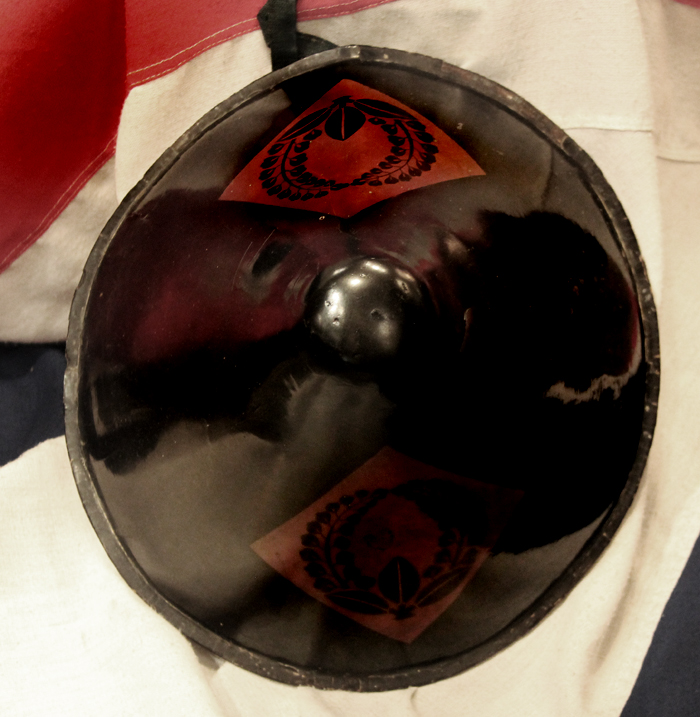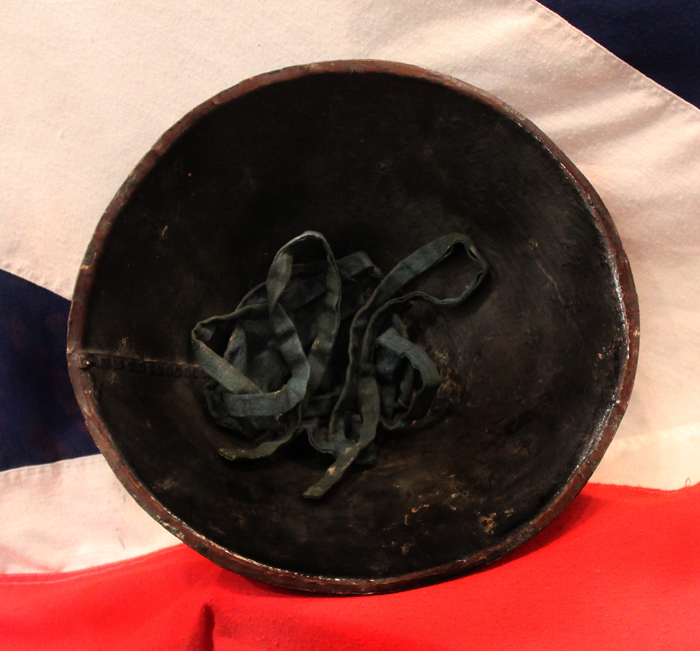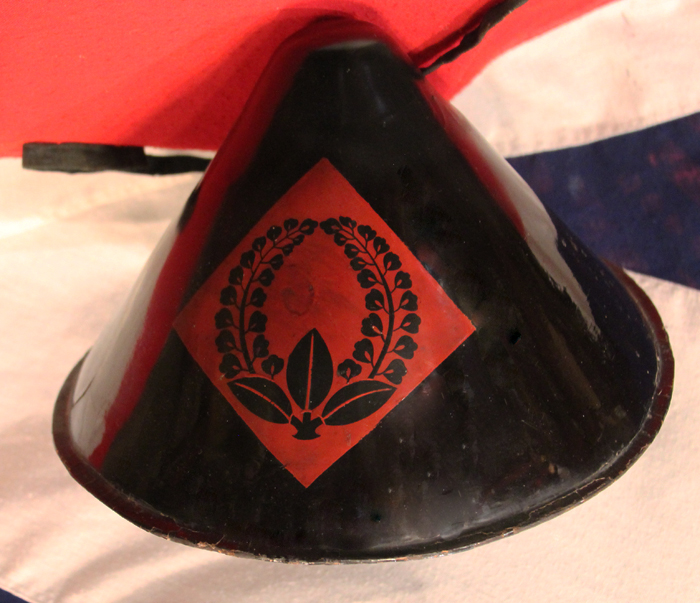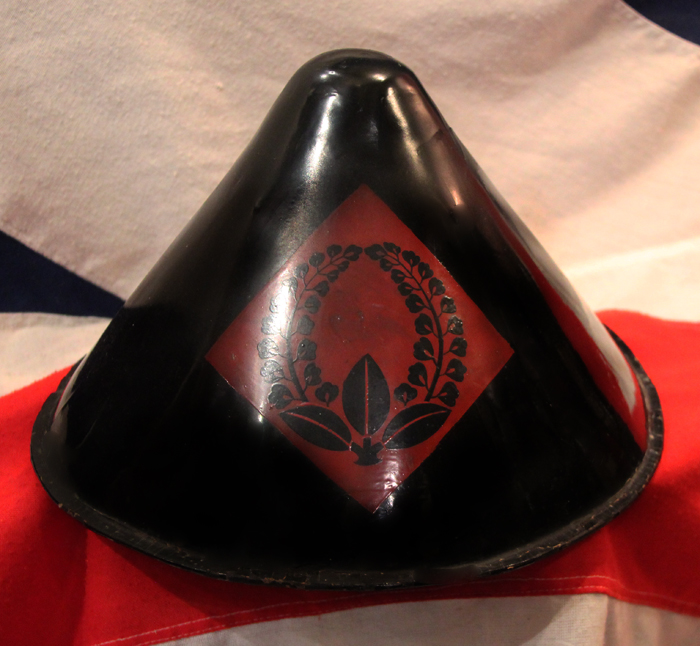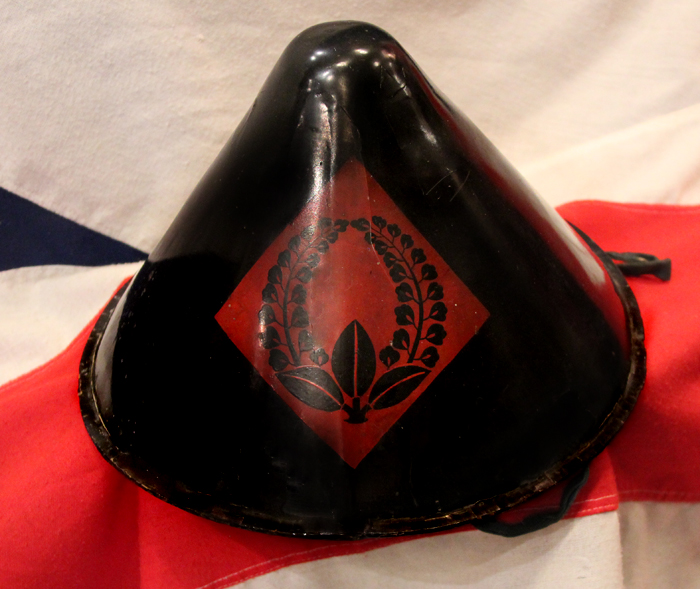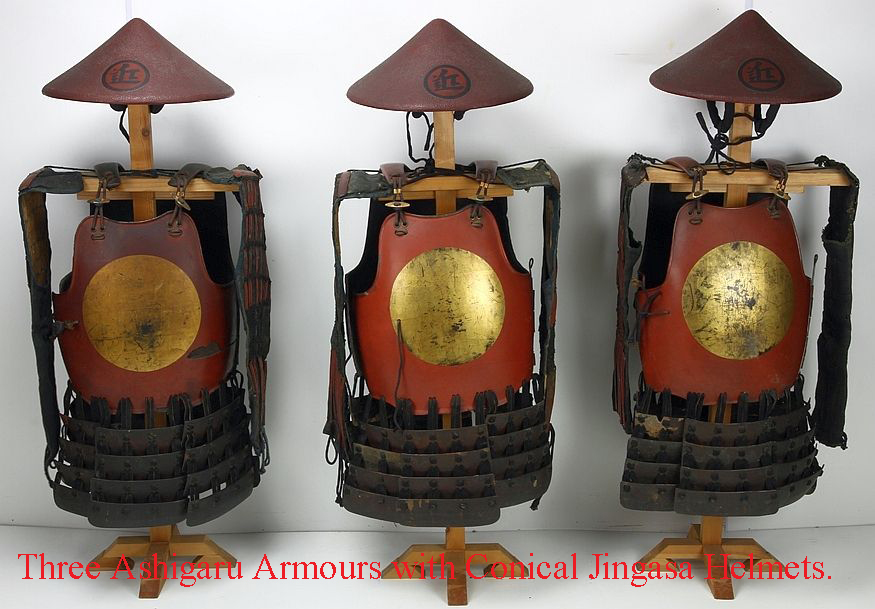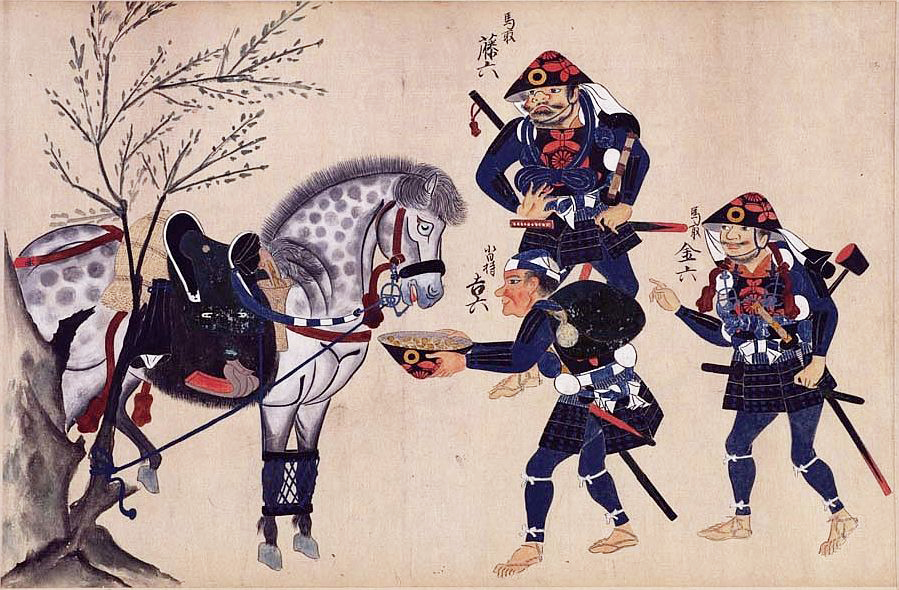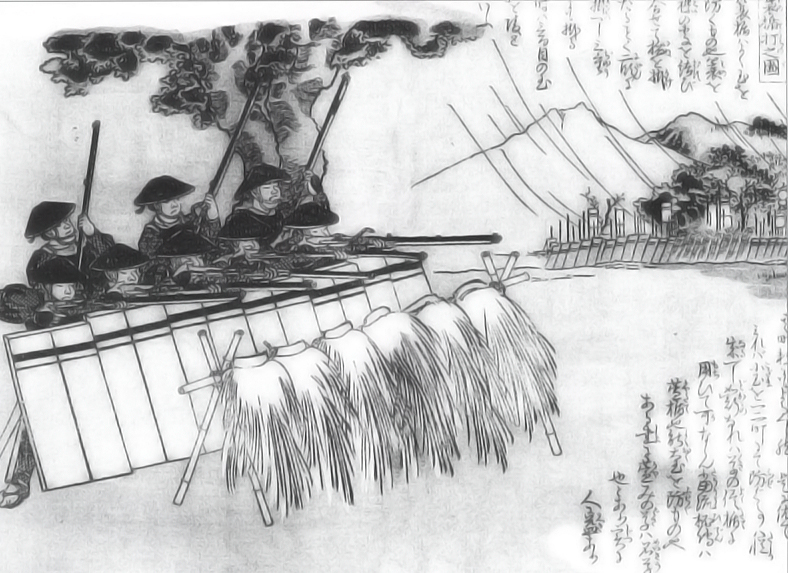Ashigaru Samurai Foot Soldier's Conical Jingasa Helmet Edo Period With the Ando Clan’s, Agari-Fuji Mon Motif of Wisteria
Toppai jingasa with agari-fuji mon. The clan claims descent from Abe Hirafu and Abe Nakamaro. The clan served the Tokugawa clan during Edo Period. Their first recorded family head, Andō Naotsugu was eldest son of Andō Haruyoshi and grandson of Ando Ieshige, retainer of Matsudaira Hirotada (father of Tokugawa Ieyasu). Ashigaru were foot-soldiers employed by the samurai class of feudal Japan. The first known reference to ashigaru was in the 14th century, but it was during the Ashikaga shogunate, Muromachi period, that the use of ashigaru became prevalent by various warring factions. shigaru were commonly armed with naginata, yari, yumi and swords. Ashigaru armour varied depending on the period, from no armour to heavily armored and could consist of conical hats called jingasa made of lacquered hardened leather or iron, cuirasses (do), helmets (kabuto), armoured hoods (tatami zukin), armored sleeves (kote), greaves (suneate), and cuisses (haidate).
The warfare of the Sengoku period (15th and 16th centuries) required large quantities of armour to be produced for the ever-growing armies of ashigaru. Simple munition quality cuirasses and helmets were produced including tatami armour which could be folded or were collapsible. Tatami armour was made from small rectangular or hexagonal iron plates that were usually connected to each other by chainmail and sewn to a cloth backing. In the 16th century the ashigaru were also armed with matchlocks of the type known as tanegashima. Small banners called sashimono could be worn on their backs during battle for identification. In the Sengoku period the aspect of the battle changed from single combat to massed formations. Therefore, ashigaru became the backbone of many feudal armies and some of them rose to greater prominence.
Those who were given control of ashigaru were called ashigarugashira. The most famous of them was Toyotomi Hideyoshi, who also raised many of his warrior followers to samurai status. Yamauchi Kazutoyo was one of such samurai and later daimyo who rose from ashigaru. Ashigaru were considered to be of the samurai class in some han (domains), but not in others
Code: 21731
1175.00 GBP

